What is an Abdominal Aortic Aneurysm (AAA)?
The aorta is the main blood vessel that carries blood from the heart to the abdomen, where it branches into the iliac arteries which carry blood to the legs. Sometimes, because of ageing or other changes, a section of the aorta may weaken and begin to bulge.
This bulge can enlarge over time as the walls of the aorta become thinner and stretch (like a balloon). This bulge is called an aneurysm.
When an aneurysm occurs in the part of the aorta in the abdomen, it is called an abdominal aortic aneurysm (AAA).
This bulge can enlarge over time as the walls of the aorta become thinner and stretch (like a balloon). This bulge is called an aneurysm.
When an aneurysm occurs in the part of the aorta in the abdomen, it is called an abdominal aortic aneurysm (AAA).
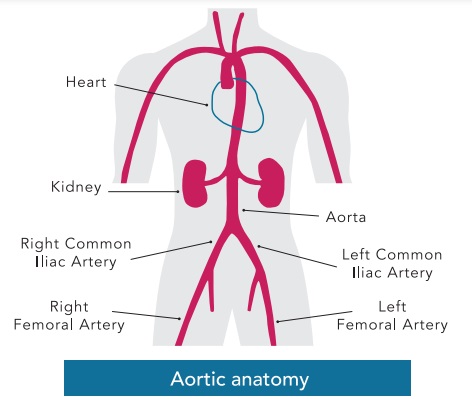
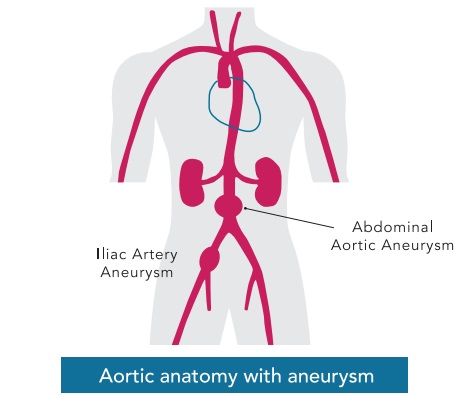
Are these serious conditions?
In its early stages, when an AAA is small, it may not pose a an immediate health risk. However the condition needs to be monitored regularly by your doctor.
In later stages, as the AAA continues to grow, the walls of the aorta can become thin and lose their ability to stretch. The weakened sections of wall may become unable to support the force of blood flow. Such an aneurysm could burst, causing serious internal bleeding.
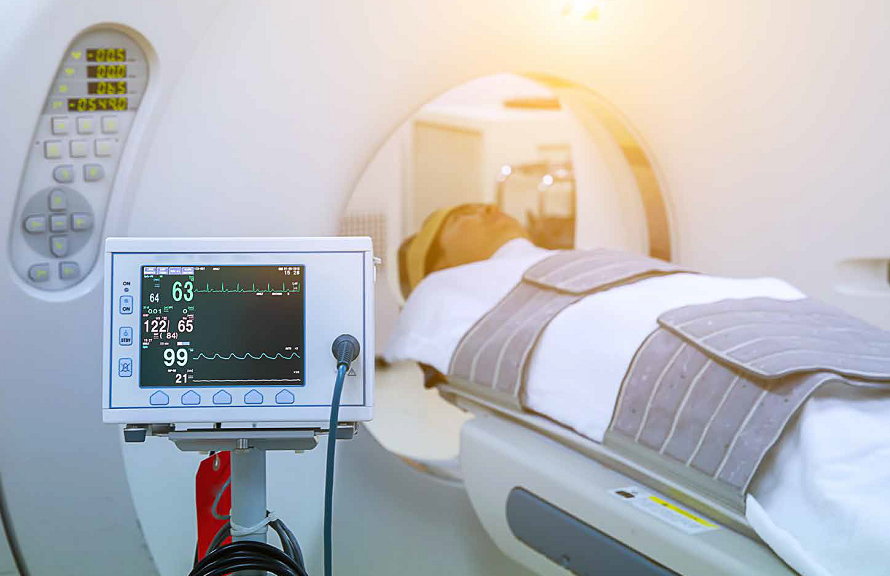
What are some of the symptoms of an AAA?
In most cases patients have no symptoms of an AAA. For patients who do have symptoms, the most common one is pain. The pain can be in the abdomen, back or chest. It could be anything from a mild ache to a severe pain. Some patients feel the aneurysm as a pulsating or throbbing mass in their abdomen.
An AAA is often discovered during an examination being done for other medical reasons or during routine medical screening. Your doctor may feel a bulge or pulsation in your abdomen. Most often, aneurysms are found during a medical test such as a CT Scan or Ultrasound.
An AAA is often discovered during an examination being done for other medical reasons or during routine medical screening. Your doctor may feel a bulge or pulsation in your abdomen. Most often, aneurysms are found during a medical test such as a CT Scan or Ultrasound.

What causes an aneurysm?
Atherosclerosis, injury or a hereditary defect of tissue within the arterial wall can cause a weakening of the aorta. Blood pressure against the weekend area causes ballooning (enlarging and thinning) resulting in formation of an aneurysm.
Risk factors for developing an aneurysm include family history, smoking, heart disease and high blood pressure.
Risk factors for developing an aneurysm include family history, smoking, heart disease and high blood pressure.

Treatment of Abdominal Aortic Aneurysm (AAA)
How do doctors treat an AAA?
When an aneurysm is small, your doctor may recommend periodic checkups to monitor it. If an aneurysm is larger, or is rapidly growing, it has a greater risk of bursting. Your doctor will recommend treatment. There are two types of treatment for AAA:
- Open Surgical Aneurysm Repair
- Endovascular Aneurysm Repair (EVAR)
What is an Open Surgical Aneurysm Repair?
In this approach, surgery is performed to repair the section of the aorta that has an aneurysm. To reach the abdominal aortic aneurysm, a doctor makes a cut through the abdomen wall of the patient. After the blood flow through the aorta is stopped, the doctor repairs the aneurysm section of the aorta by replacing it with a graft (a fabric tube). The graft is sewn into place and it acts as a replacement blood veseel. The surgery takes about two to four hours to complete.
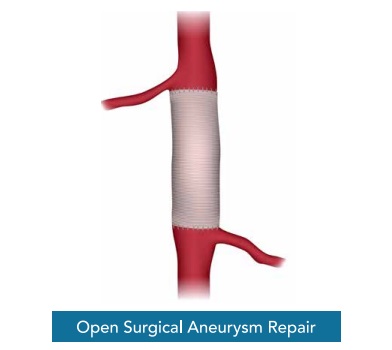
What is an Endovascular Aneurysm Repair? (EVAR)
Endovascular repair is a newer procedure. Endovascular means “inside or within a blood vessel.” Instead of making a large incision in the abdomen, the doctor makes a small cut to the grains to the femoral arteries.
Through these small cuts, a sheath containing an endovascular graft (fabric tube with metallic stents) is inserted into the arteries and positioned at the aneurysmal segment. The endovascular graft is deployed to seal off the aneurysm. The graft makes a new path through which the blood flows. The graft remains inside the vessel permanently. Endovascular repair typically takes one to three hours to complete.
Because there are smaller cuts than those in open surgical repair, the endovascular repair usually results in less discomfort, a shorter hospital stay and faster recovery. Patients may have a hospital stay of only usually between two to four days. They can usually return to normal activity within one to two weeks after the procedure. They were less likely to need a blood transfusion.
As with any medical procedure, endovascular repair has a risk of complications. Endovascular repair also requires routine follow-up visits with your doctor. Tests are done to evaluate the procedure and monitor the success of the treatment.
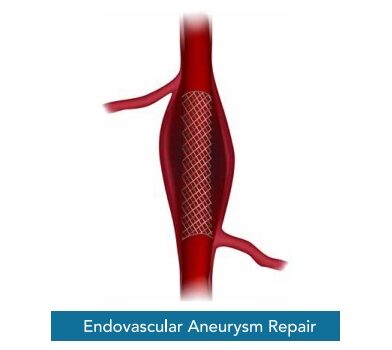
Do all patients have the same operation?
Depending on the exact location of the aneurysm, the open repair or the Endovascular repair may vary. In Endovascular repair, if the iliac artery is also aneurysmal, an additional endovascular graft (an Iliac Bifurcation Device) may be recommended. If the aneurysm starts too close or above the renal arteries, a Custom-made Device (Endovascular graft with Fenestrations (Holes) or Branches to prefuse the renal and visceral arteries) may be required. Your doctor will explain these details.
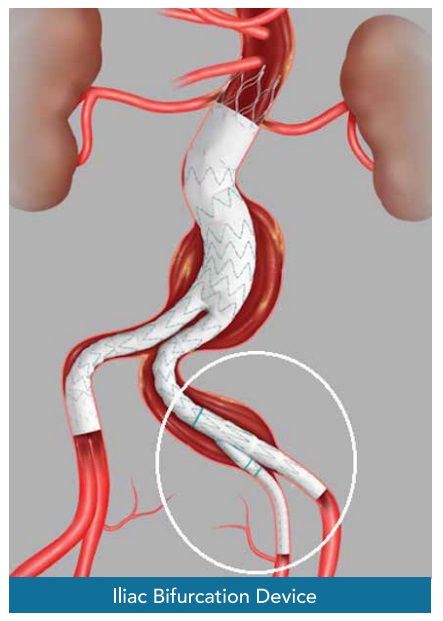

Summary
Abdominal Aortic Aneurysm (AAA) can be a dangerous disease if it is not diagnosed and treated early. Early treatment is usually safe and successful. The options of treatment should be discussed with your doctor to determine what is best for you.




